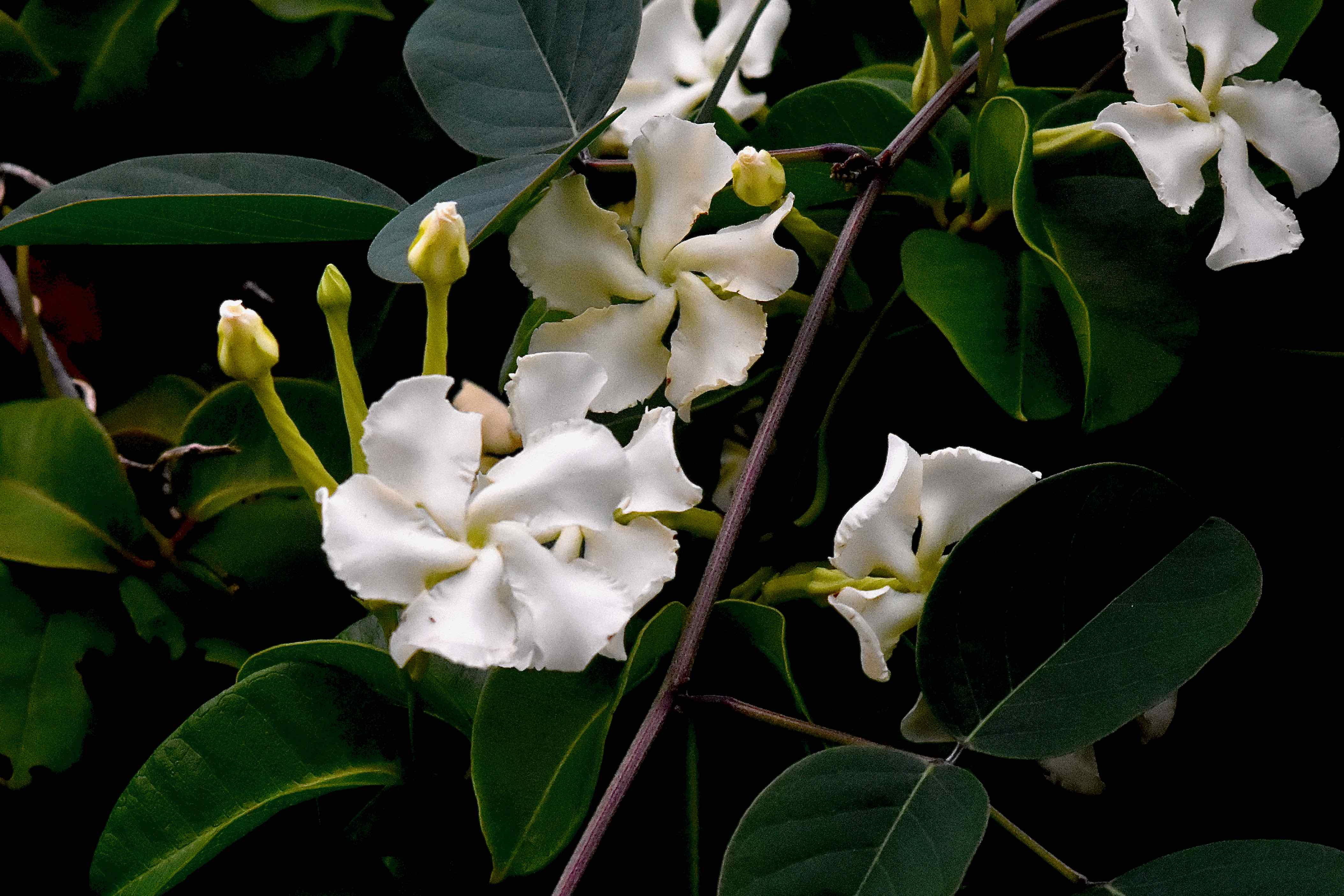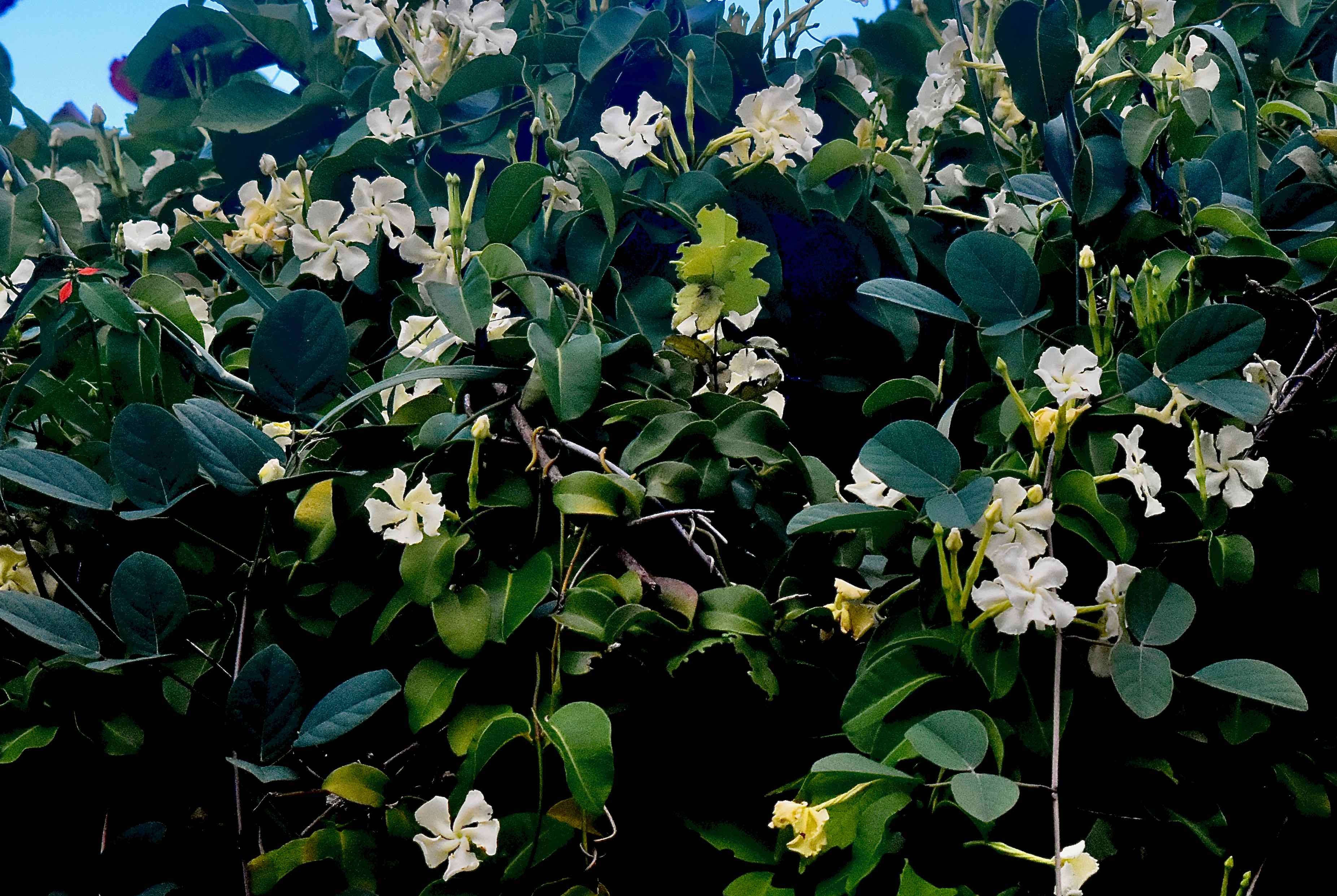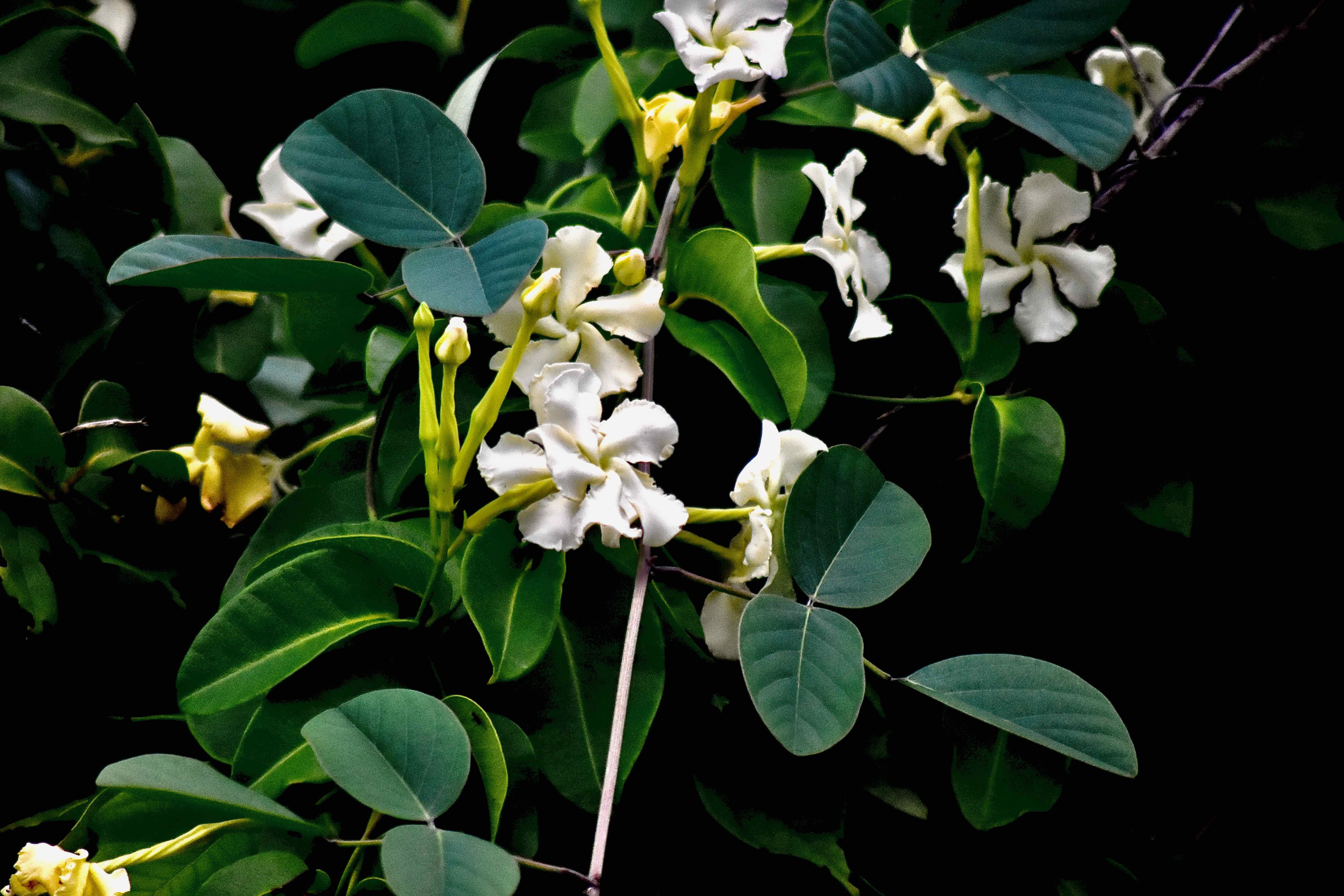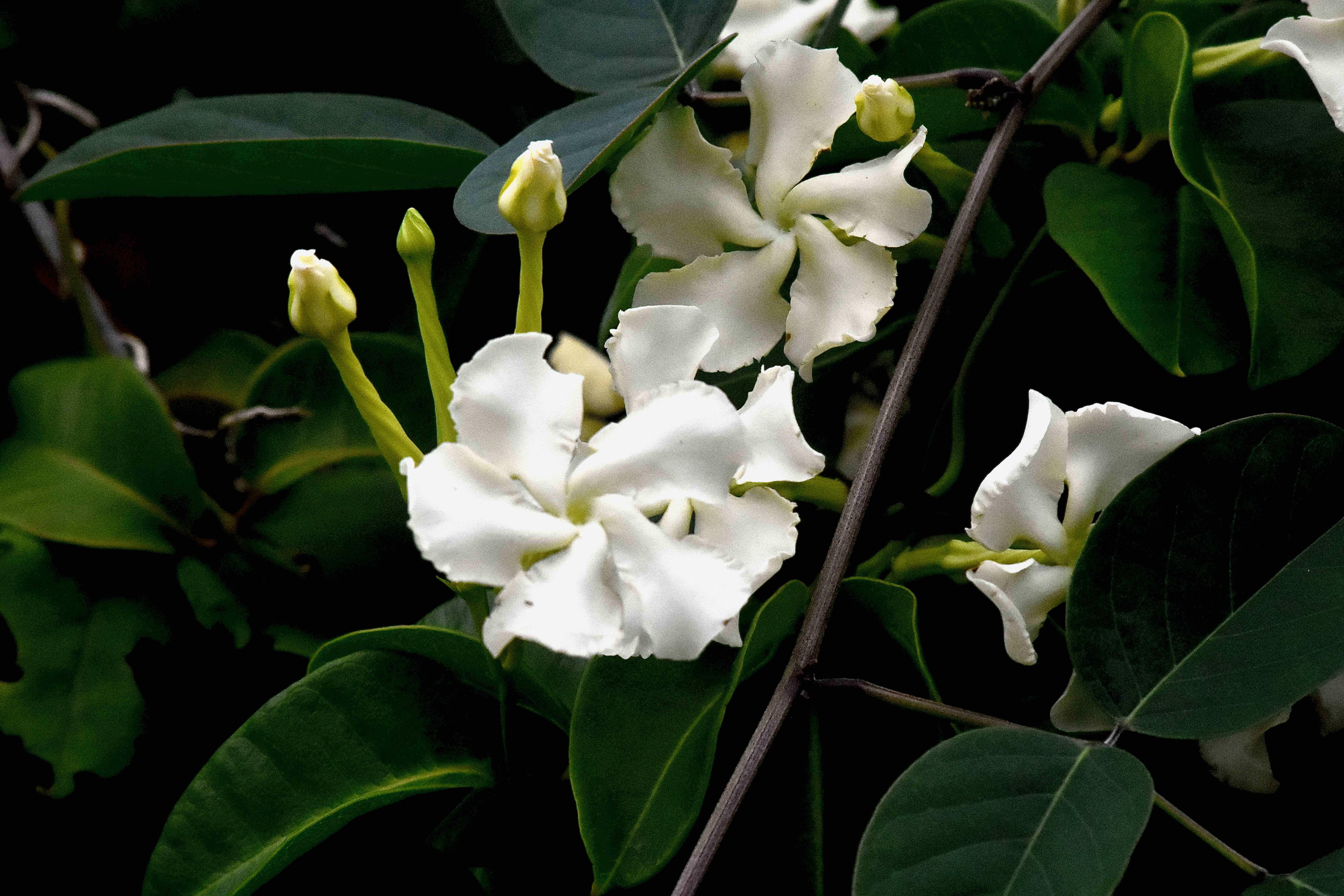
Devil's potato, photographed at Hobe Sound National Wildlife Refuge, Hobe Sound, Martin County, in September 2016.
Devil's potato. Strange name, lovely flower.
Known to the world of science as Echites umbellatus, devil's potato is a perennial vine found in parts of Florida, the Caribbean, Mexico and Central America. In Florida, it's pretty much limited to the eastern coastal counties from Volusia south to the Keys. It is a Florida native, found only in Florida among the 50 states.
It gets that strange name from two features: the devil's part from the deadly white sap that runs through the plant; the potato part from a thickening in the roots that somewhat resembles a spud. The scientific name comes from the Greek word for viper, echis, a reference to the snakelike way the stem coils; umbellatus is a reference to the way the flowers are arranged in umbels — flower stems arising from the same point.
The flowers are as large as two inches across, white or yellow, with a yellowish center and five lobed and frilled petals that resemble the blades of a fan that spins counterclockwise. The throats are long and deep and require the lengthy proboscis of certain hawk moths in order for pollination to occur. The flowers bloom year round but peak in summer. They're followed by long, oddly paired pods that split open when ripe, allowing the seeds to be distributed by the wind.
The plant itself is a long, woody vine that twines and clambers and sprawls onto its neighbors. The leaves are large and oval shaped. Favorite habitats include coastal uplands and rock pinelands. It can tolerate some salt spray but not salt water.
In Jamaica, it's believed that if you wrap devil's potato vine around the outside of a painful leg, it will induce vomiting if the pain is caused by a poison. Other than that, there are few, if any at all, medical uses for devil's potato. Which makes sense, considering its toxicity.
Landscaping, on the other hand, is a different story. Devil's potato, with it's large flowers and twining ways, is a plant that screams trellis or fence or any other object that can be covered by its twining stems. It's also used in wildflower gardens. It grows in poor soil as well as soils with some organic matter, it is drought tolerant, doesn't require additional watering once established and takes to full sun to partial shade. it is a slow-growing plant.
Devil's potato serves as a larval host for three species of moth: the oleander moth (aka the polka dot wasp moth, Syntomeida epilais), Uncle Sam moth (aka faithful beauty moth, Composia fidelissima) and the tetrio sphinx moth (Pseudosphinx tetrio). The caterpillars pick up toxins from dining on the plant, which helps deter hungry birds from feasting on them.
Devil's potato is a member of Apocynaceae, the dog bane family. Other common names include rubbervine, wild potato, milk vine and in Jamaica, maroon vine. In the Bahamas, it's also known as Danish. Why, we don't know. Maybe it resembles a pastry.



